Meet the Companies Trying to Be the Uber of Funerals
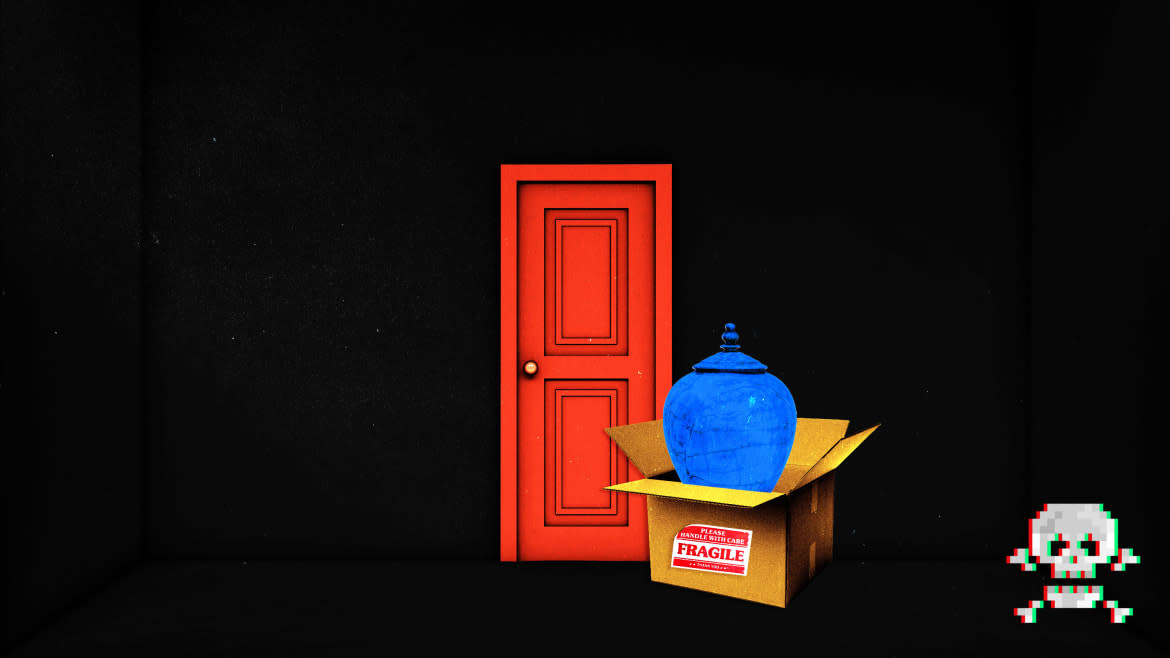
- Oops!Something went wrong.Please try again later.
John Paul Tocher was in the middle of pounding a fence post into his yard last year at his home in Wallaceburg, Ontario, when he heard a snap in his spine. While it hurt, the 78-year-old didn’t immediately go see a doctor—partly due to the family doctor shortage in Canada, partly due to the stubbornness often seen in men of a certain age.
A year later, his daughter April Mansilla called a wellness check on him after not hearing from Tocher in two days. Police went to his home and discovered that he had fallen days before. After several weeks of hospital visits and living with his daughter, the two learned the grim truth.
“It was cancer all the way through,” Mansilla told The Daily Beast. It turned out the snap in his back from a year earlier was a result of the disease ravaging through his body. “We thought they were just gonna basically fuse his spine and he would be back to his old self. But no. The cancer was everywhere.”
Within three weeks, John—on the cusp of celebrating his 79th birthday—was dead. Before he passed away, his daughter spent his final days in a frantic state caring for John as cancer wore away at his body and trying to cherish as much of the time she could with her dad while they both still had each other.
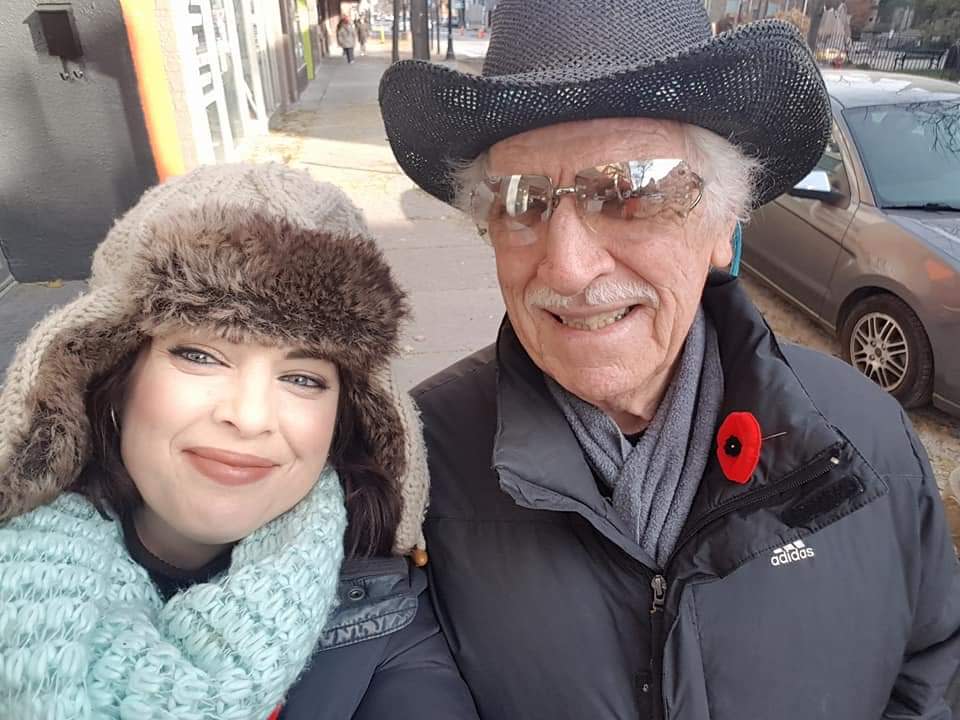
(left to right) April Mansilla and her father, John Paul Tocher.
Over all of this hung the living nightmare of planning end-of-life arrangements—a difficult task on its own that was near-impossible to balance with all the other things going on at the time.
When she could, Mansilla would quietly leave her father’s hospital room to make phone calls to funeral homes, careful so he didn’t hear her trying to make arrangements for his cremation. Yet each time she dialed, it seemed like nobody wanted to speak to her to help.
“I’m trying to duck out of the room quickly to get back with my father who needs me, and nobody picked up the phone,” Mansilla recalled. “I left messages basically saying that I didn’t know what to do.”
So Mansilla did what many of us would do in her situation: She took to Google. “I searched ‘cremation help,’” she said. That’s what brought her to Eirene, a Canada-based direct-to-consumer cremation service. When she first got on the call with the company, it felt like a massive weight was lifted off her shoulders. Not only did someone actually pick up the phone, but the employees on the other line were caring, attentive, and fully sympathetic to what she was going through. In a time when she needed support the most, they gave it to her.
“I was pretty frantic because at that point, he only had a couple of days,” she said. “Right away, they said, ‘You’re going through a hard time right now. We have you.’ And it was just like, ‘Finally.’”
The company walked her through the process: For an all-in-one fee, they would pick up her father’s body from the hospital, take it to get cremated per his wishes, and send her the urn with his remains when finished. No going to a funeral home. No having to talk to insurance companies. Just go to their website, make a phone call, and they take care of the rest.
At first blush, it might seem like an impersonal and almost cold-hearted way to handle a loved one’s death. But for Mansilla and Eirene’s founder and CEO Mallory Greene, it’s the next evolution for a very old industry that desperately needs a jolt of life.
“Funeral services haven't really changed in the past 100 years,” Greene told The Daily Beast. “We all think of the exact same thing when we think of funeral homes: brick and mortar, in person, lots of paperwork, you talk to a man in a suit. It’s a pretty outdated industry overall. We have a different expectation of how services are delivered today, especially as we no longer live and die where we grew up.”
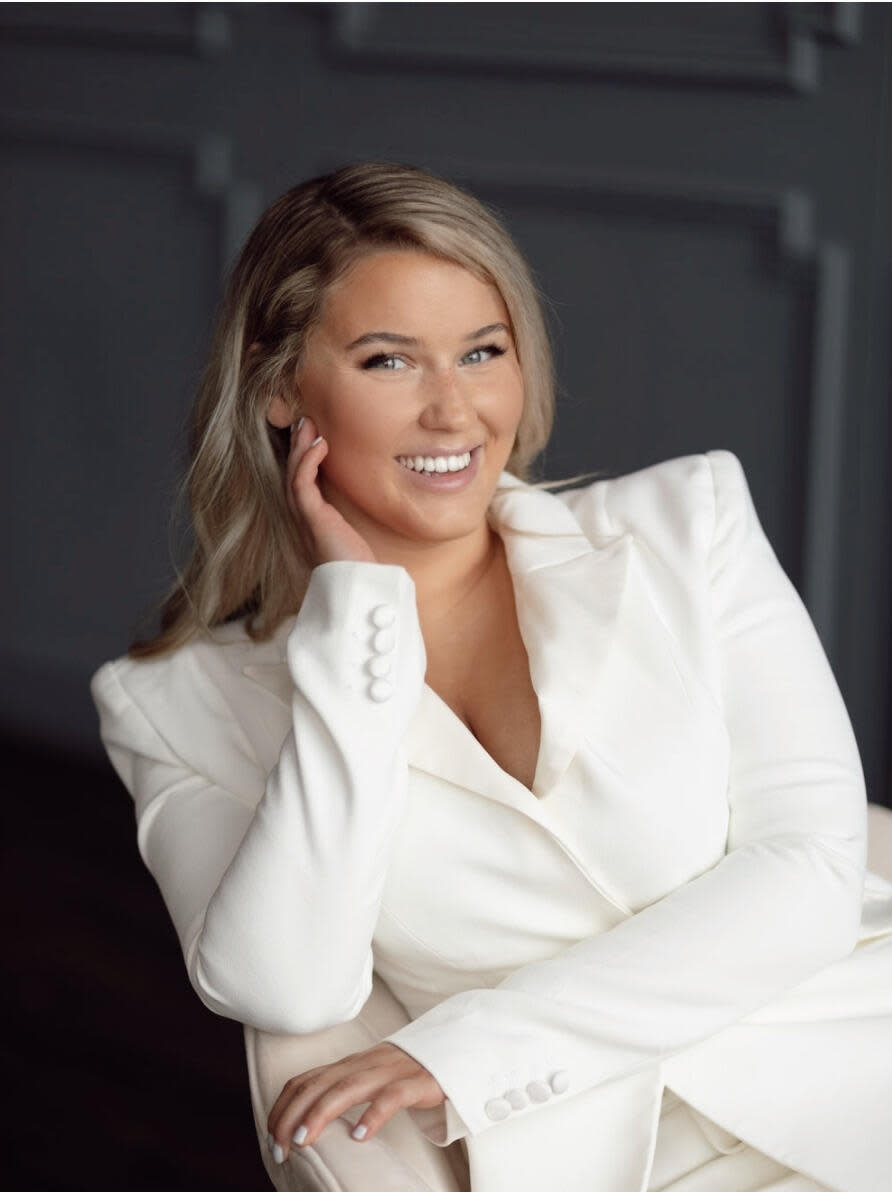
Mallory Greene, founder and CEO of Eirene.
Trends bear that out, too. More and more people are opting for cremations over traditional burials each year. The National Funeral Directors Association (NFDA) and the Cremation Association of North America projects that four out of five Americans will choose cremations over caskets by 2040.
After all, funerals aren’t cheap. A recent NFDA report found the average viewing and burial cost for 2021 was $7,848—an amount that could be prohibitively costly for some, especially if the death was unexpected.
On top of all this, the COVID-19 pandemic has fundamentally changed the way that the world at large approaches death. Not only are people looking for more efficient and cost-effective ways to bury their dead, said Greene, but they’re also looking to do it without having to go outside to sit in a stuffy funeral home for hours on end to fill out paperwork and potentially get upsold on caskets and urns.
That’s a massive shift in how people are approaching their end-of-life care—and it’s one that represents a point of no return for how we treat our dead.
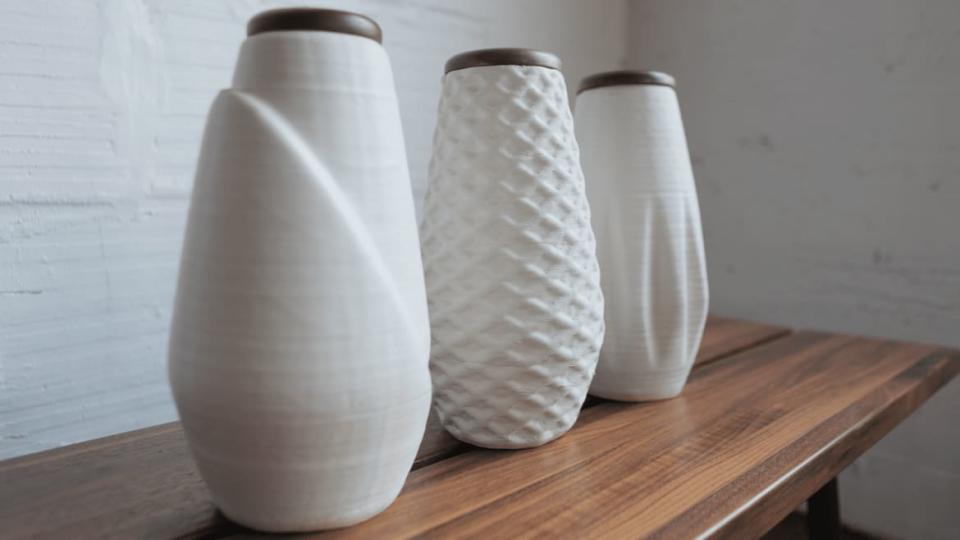
3D-printed urns for sale from direct-to-consumer cremation company Solace Cremations.
“The reality is the pandemic catapulted the funeral industry into recognizing that a lot of the processes we have are not efficient,” Greene explained. “For example, getting a government death certificate before the pandemic was all done in person. Now everything has to go online.”
This trend is even reflected in the type of people who are offering these end-of-life services—folks like Greene, a blonde thirtysomething woman fresh out of a stint in fintech looking to do for the funeral industry what Uber has done for taxis.
The same goes for Keith Crawford, the co-founder and CEO of another direct-to-consumer cremation service, Solace Cremations. He and his partner worked in the creative and design arm of Nike for years before they decided to shift from footgear to funerals.
“When my dad passed away, I felt like the whole experience for the family was pretty horrible,” Crawford told The Daily Beast. “My co-founder had a similar experience with his mom passing away in England. So we thought there’s an opportunity to take everything we learned at Nike—which is very consumer-centric thinking—and really put the family at the center and, and try and try and just reimagine the whole thing.”
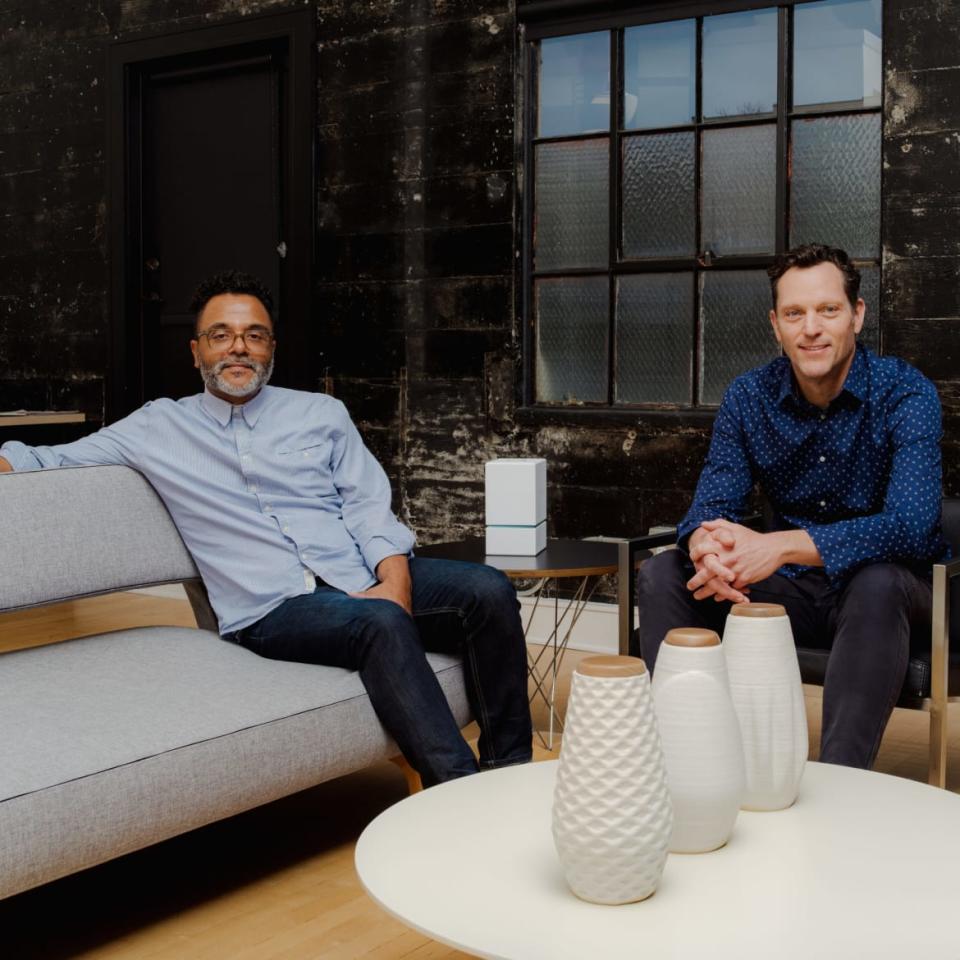
(left to right) Solace’s founders David Odusanya and Keith Crawford.
Like Eirene, Solace helps take care of the end-to-end cremation process from the moment your loved one dies to when you finally receive their urn. Unlike their Canadian counterpart, Crawford’s venture takes care of swaths of the United States from Portland, Oregon, to Los Angeles, California, to Jacksonville, Florida.
The two have different pricing too. As of reporting, Eirene offers two packages: a standard one that includes the cremation, urn, and hands-on assistance from licensed funeral directors for $2,500 (Canadian dollars) with tax; and another package that also allows you to witness the cremation process at the crematorium. Solace offers just one package at $895 with tax, that includes the cremation, a temporary urn, and assistance with arranging everything.
Both are far less expensive than the U.S. national average of $7,848 for a traditional burial (per the NFDA report). It’s even less expensive than a cremation funeral, which the NFDA said is $6,971 on average. Both DTC businesses also take roughly a week to go through the entire process—about the same as a traditional end-of-life process with a funeral home.
Given all that, it almost makes more sense to opt for a direct-to-consumer alternative. Why would you opt in for a traditional burial when you can just pay less money to have an easier process during a very traumatic time in your life? That kind of thinking might actually be causing more harm than good, according to Alan Wolfelt, a grief counselor and director of the Center for Loss and Life Transition.
“We do need to memorialize people. That’s critical,” Wolfelt told The Daily Beast. He said that traditional burials are crucial for the most important part of grief and mourning: the acknowledgement of death. Without the ritual of gathering to honor the dead, we could do ourselves a disservice in the way we process the trauma of death. “There’s a value in having a permanent place that our people have a place to go to and say, ‘That's where my dad’s remains are. He is dead,’” said Wolfelt.
People Are Going Full ‘Black Mirror’ to Bring Back the Dead
The science behind it is a mixed bag though. One 2020 study published in OMEGA Journal of Death and Dying looked at the impact of funerals during the COVID pandemic, and its findings were inconclusive and inconsistent.
Still, the study’s authors went on to write that “benefit of after-death rituals including funerals depends on the ability of the bereaved to shape those rituals and say goodbye in a way which is meaningful for them.” In other words, funerals help you grieve if you believe they do.
Another 2018 study published in Philosophical Transactions of the Royal Society B suggests that when compared to pre-modern end-of-life practices where communities would come together to conduct funerals, modern society takes a much more individual role where the work of organizing what to do with the dead is much in the hands of the person’s loved ones (if they had any at all). This, in turn, results in a fracturing and siloing of the community, where people don’t feel like they should invest in their neighbors because they have less of a stake in them even after they die.
“If people feel they can face mortality without support from relatives or the local community,” then they begin to “disengage from such relationships,” the study’s authors wrote.
That doesn’t just have to do with Eirene or Solace, but modern-day funeral practices as a whole. But it does raise the question of whether engaging in a more isolated end-of-life service that cuts out direct human contact with others could end up exacerbating negative impacts during the grieving process.
That’s the wrong way of looking at it, according to Crawford. “We are really careful about training the people that we hire to be on the phones,” he said. “They’re all amazing, empathetic, and great listeners. When people call, at the beginning, they just want to tell their story. Sometimes it’s expected and a long time coming. Sometimes it’s tragic and unexpected, and everything in between. We guide them through what needs to happen.”
Greene said she employs a similar approach, hiring a team of “all women, licensed funeral directors” to help guide the customer through the process no matter where they’re at. “Even though we're a tech business, we are still very human,” she said.
Mansilla said this human touch came through to her in spades, which was especially important since her father’s death seemed to happen in the blink of an eye. It wasn’t like she and her family knew Tocher had cancer after all. He was working on a fence one moment and lying in a hospital bed sharing his final waking moments watching sunsets and talking about happy memories with his daughter the next.
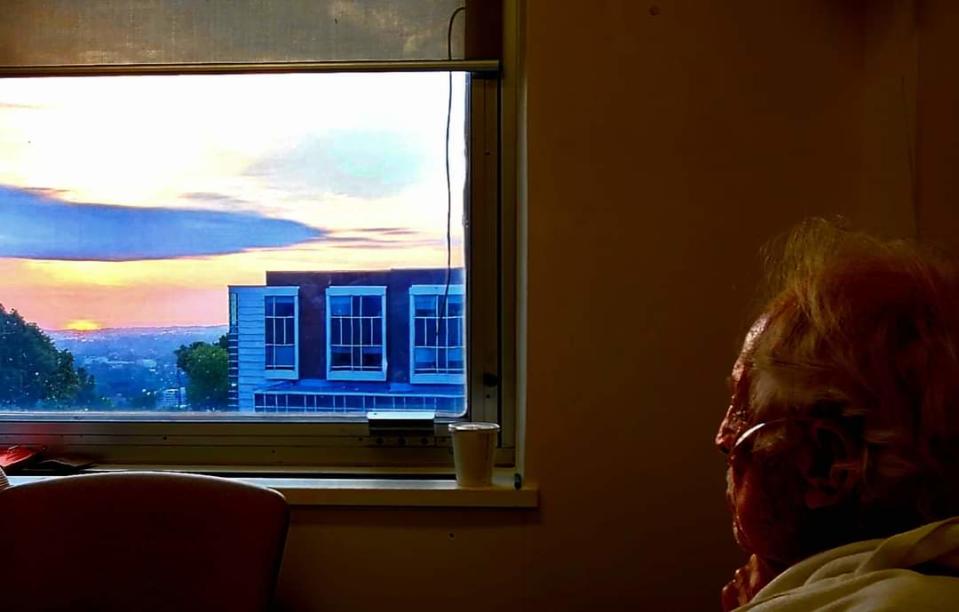
John Paul Tocher spending his final days watching sunsets and sharing memories with his daughter April Masilla.
When it came time to finally receive her father’s ashes, Mansilla wasn’t sure if she was going to be able to handle the moment, let alone look at the remains. But Eirene sent someone to deliver her father’s remains to her directly.,
“She gave me a hug and told me, ‘It’s just like sand,’” Mansilla recalled. The woman sat with her as she sat with her father—the man who had raised her and was gone too quickly to comprehend. “I was really struggling but she was really comforting.”
Though it’s an unorthodox approach to saying goodbye to loved ones, DTC funerals are here to say. For people like Mansilla, these services lift the burden of dealing with logistical minutiae while navigating the overwhelming, pitch-black waters of loss and grief. It doesn’t really matter whether the people who provide assistance are seasoned funeral directors or newbie startups.
“The world is changing,” she said. “We don’t have to be stuck with a funeral home. The world is adapting and changing. It’s good to change with it.”
This story is part of a series on the innovation of death—how research and technology is changing the way we put the deceased to rest, how we grieve, and how we perceive death moving forward. Read the other stories here:
People Are Going Full ‘Black Mirror’ to Bring Back the Dead
Got a tip? Send it to The Daily Beast here
Get the Daily Beast's biggest scoops and scandals delivered right to your inbox. Sign up now.
Stay informed and gain unlimited access to the Daily Beast's unmatched reporting. Subscribe now.

